- IN THIS ARTICLE
Are you ready to give your old clothes a new life?
Ever find yourself holding onto a piece of clothing that’s too special to get rid of, but you no longer want it the way it is?
It’s time to start upcycling clothes.
Upcycling clothes not only helps to reduce textile waste, but also reduces the demand for new raw materials, making it an environmentally responsible choice. Upcycled clothes are essential, especially when you don’t want to throw away old pieces.
So why not use these natural resources without creating waste material? Just as we recycle old plastic bottles, you can start to recycle old clothes into something new and exciting through creative upcycling.
From upcycled fashion to sustainable fashion, there is much to do with your garments to turn into a new material. Upcycled garments and clothes are a great way to reduce textile waste and create unique, eco-friendly fashion.
We’ve put together 9 simple yet stylish ways for you to transform your attire, showcasing the upcycled clothes before and after. From customization options to vintage fabrics to DIY projects, there’s plenty of inspiration here to encourage you to create trendy upcycled garments.
So, let’s get creative!
What is Upcycling?
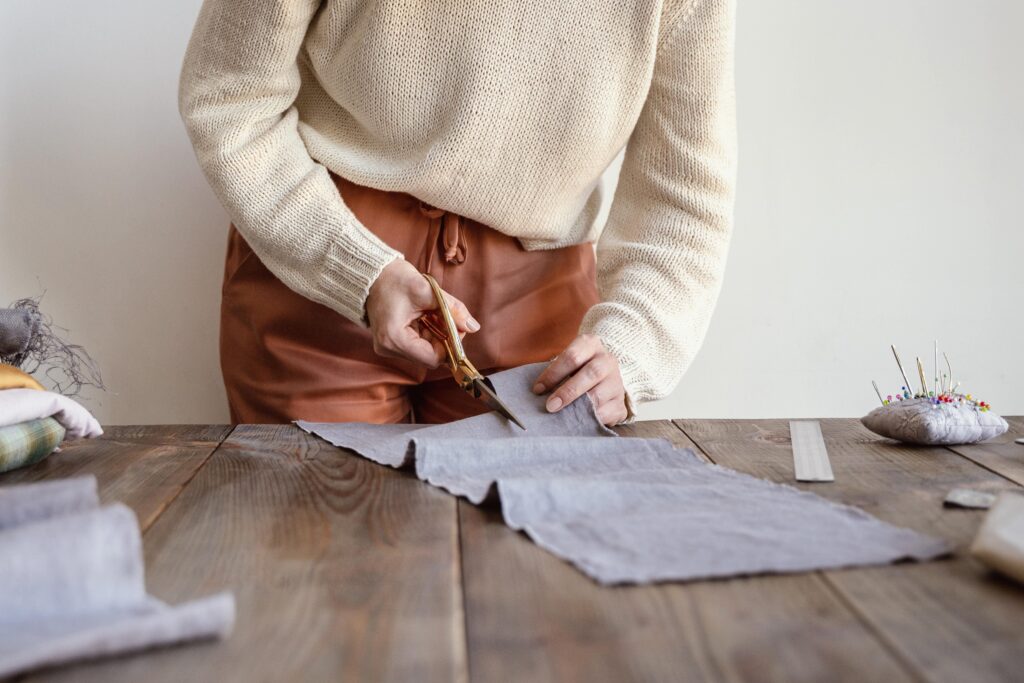
Upcycling is the process of taking old pairs of clothing and turning them into new materials, more beautiful, useful, while creating less waste.
Unlike recycling, which involves breaking down materials and making them into something else, upcycling repurposes garments without changing their form or content.
By upcycling old clothes, we can create stylish and unique pieces without using any additional materials or energy to break down and recreate something entirely with new fabric.
Differentiating Upcycling from Recycling
Upcycling repurposes old clothes into unique and fashionable pieces, often using sustainable and recycled materials, and is a popular way to reduce textile waste and promote sustainability. This practice can be especially rewarding when dealing with baby clothes, transforming them into sentimental keepsakes or new items for growing children.
From old jeans to fancy dresses, upcycling offers a world of possibilities for turning your forgotten clothing into something unique and functional. Unlike recycling, upcycling does not involve breaking down materials, but rather repurposes them without changing their form or content.
It can reduce the carbon footprint of the fashion and apparel industry, and save individuals money, making them more eco-conscious. Sewing and repurposing skills are important to give old clothes a new lease on life.
Types of Upcycled Clothing
Upcycling clothes can involve any type of clothing, but some are easier to upcycle than others.
Knit fabrics, cotton tees, denim jeans, jackets, and skirts are great candidates for upcycling because they require minimal effort to repurpose.
By selecting forgiving materials like cotton and denim, upcycling can become a more accessible and less daunting task. Knit fabrics, cotton tees, denim jeans, jackets, and skirts can all be transformed into stylish upcycled clothing.
Knit Fabrics: Their flexibility and stretchiness make them an ideal choice for beginners. You can turn an old t-shirt into a fun project like a stylish tote bag, a sweater into a cozy scarf, or even create a new skirt with a funky pattern to make it a sentimental value.
Cotton Tees: Cotton Tees: Cotton tees, especially old t-shirts, are another popular material for upcycling. They can be easily transformed into crop tops, tanks, or even a new dress. T-shirts are also great for adding patches, iron-on designs, or embroidery.
Denim Jeans: Denim jeans are a popular choice for upcycling. They can be transformed into shorts, skirts, bags, or even a new pair of jeans. Denim is a durable material, which makes it perfect for upcycling. Denim can also be embellished with patches, embroidery, or paint.
Jackets: Jackets are also great candidates for upcycling. A denim jacket can be transformed with embroidery, patches, or a new lining. A leather jacket can be updated with new zippers, buttons, or lining. A bomber jacket can be transformed with a new collar or cuffs.
Skirts: Skirts are another material that can be upcycled easily. A long skirt can but cut short to create something new like a mini skirt. A maxi skirt can be turned into a dress, making it a one of a kind piece. Skirts are also great for adding details like lace, trim, or fringe.
- Flannel Shirts: Old flannel shirts are another great choice for upcycling. With their sturdy material and classic patterns, flannel shirts can be reimagined into various other items such as pillow covers, tote bags or even patchwork quilts. Their rustic charm can also add a unique touch when combined with other fabrics in your upcycle project.
Heavy materials like leather and suede are not forgiving, which means that mistakes can be more difficult to correct. If you’re upcycling for the first time, it’s best to choose more forgiving materials and build up your skills before moving onto these fabrics.
What to Look for in Clothes to Upcycle
When searching for old garments, look for items that are in good condition with minimal damage. Some fast fashion new garments have poor quality, so it’s a lot easier to sew yourself with a sewing machine.
When it comes to upcycling, the goal is to create new and stylish pieces without contributing to waste. By using upcycling brands repurposing waste materials effectively, we can create a more sustainable and responsible fashion industry.
You could look for inspiration, getting fresh ideas from the fashion industry to upcycle clothing and even become your own fashion designer.
Pay attention to clothes with interesting details such as buttons, lace, or embroidery that can add interest to a plain shirt or pants.
Method 1: Knot a T-Shirt
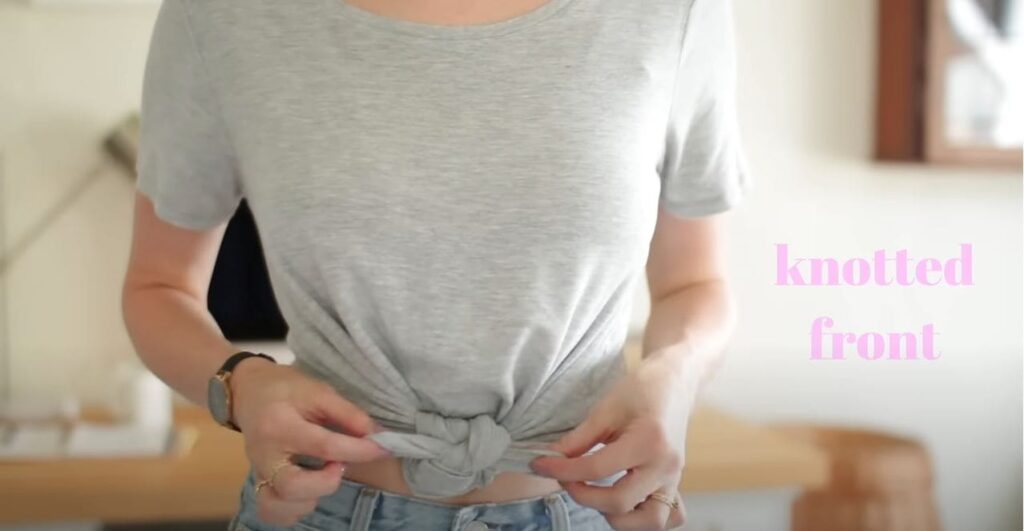
A simple knot in an old t-shirt can instantly transform it into something new.
To create a cropped look, pinch the fabric and tie it in a knot close to the top of the fold.
Trim off any excess fabric for a neat finish.
This method is perfect for summer.
Method 2: Add Patches

Adding patches to a shirt is an excellent way to add personality to your upcycled products.
Iron the patch onto the fabric and let it cool for about 10 minutes.
Then, carefully stitch each edge of the patch in place using a needle and thread.
For a more secure hold, use a cross-stitch technique and go over each stitch multiple times.
If your stitching skill isn’t all that great, try using an iron adhesive to attach the patch instead.
Some of these top fashion designers and brands will charge you hefty on something you can do yourself with enough practice.
Method 3: Layer with a Cardigan
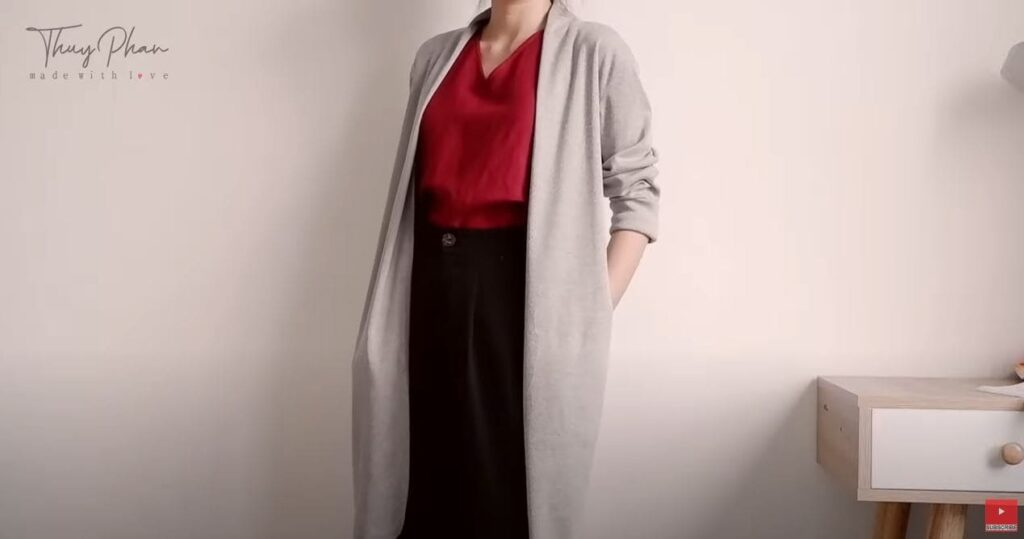
Layering an upcycled cardigan over a shirt is a simple and sustainable way to give an old garment a new and stylish look.
Choose a cardigan that fits comfortably and pairs well with the shirt.
Put on both pieces of clothing, adjust them to fit comfortably, button or zip up the cardigan, and make sure it lays flat across your chest.
Accessorize with scarves, jewelry, or hats to complete the look.
Method 4: Add a Scarf
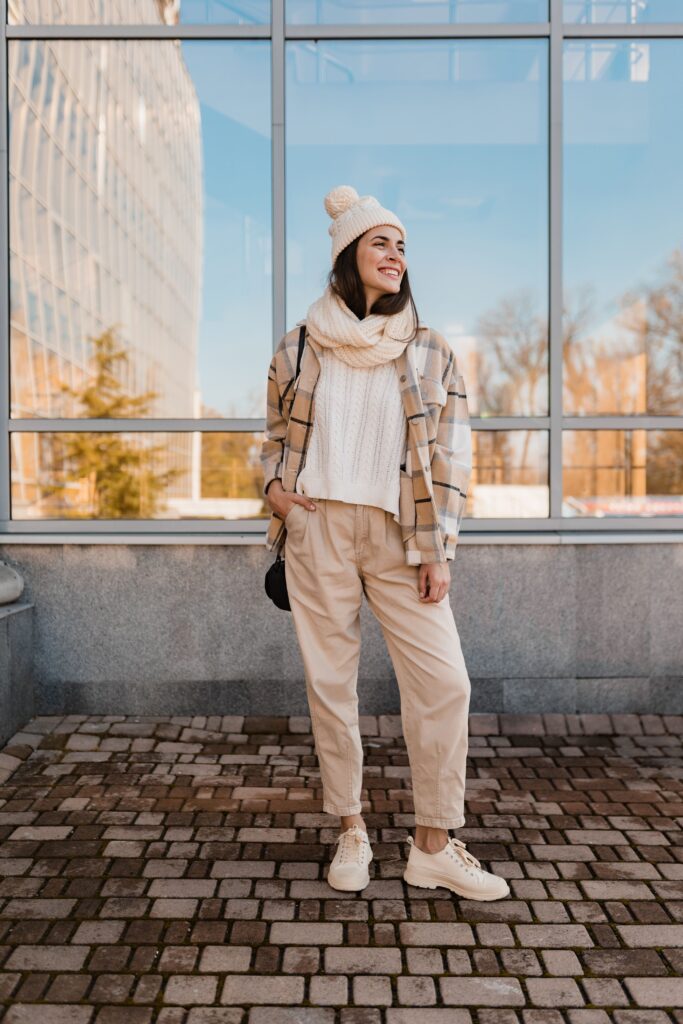
A simple scarf can elevate a basic shirt into something chic and fashionable, making it an essential part of any sustainable wardrobe.
Choose a scarf that complements the color of the shirt, and drape it around your neck for an instant fashion upgrade.
This simple technique can transform an old shirt into a stylish outfit.
Method 5: Cut and Refashion
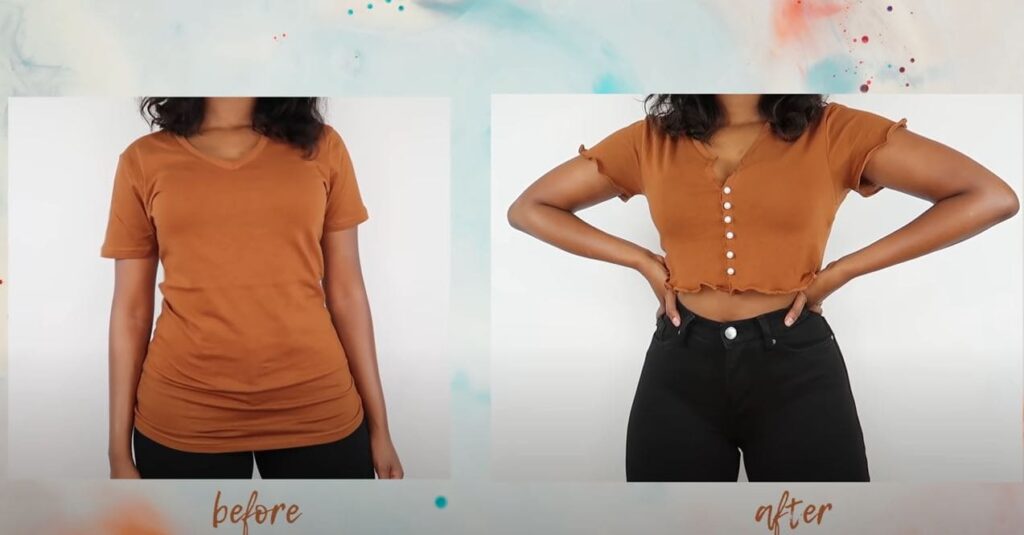
By repurposing old pieces, you can create something new and fashionable without contributing to waste.
You can also cut off the sleeves of a shirt and create a tank top, or cut the shirt into a crop top.
When cutting and refashioning, make sure to measure and mark the fabric with a fabric pen or tailor’s chalk before cutting to ensure that your cuts are even.
It’s also a good idea to try on the garment before making any cuts to ensure that you’re happy with the length and fit.
Method 6: Make a Skirt Out of Jeans
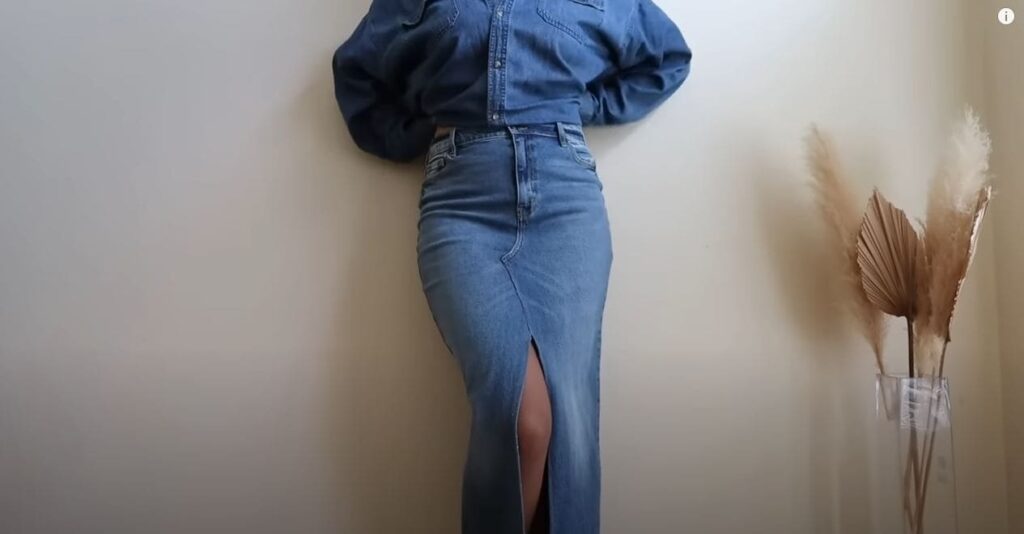
If you have old denim jeans that no longer fit, you can easily turn them into a stylish skirt.
To do this, simply cut off the legs of the jeans just below the knee and hem the raw edges.
Don’t let your old jeans go to waste – upcycle them instead! By adding a new waistband and closure to the skirt, you can create a personalized and stylish piece that reflects your individual style and values.
Method 7: Create a Pillow or Cushion
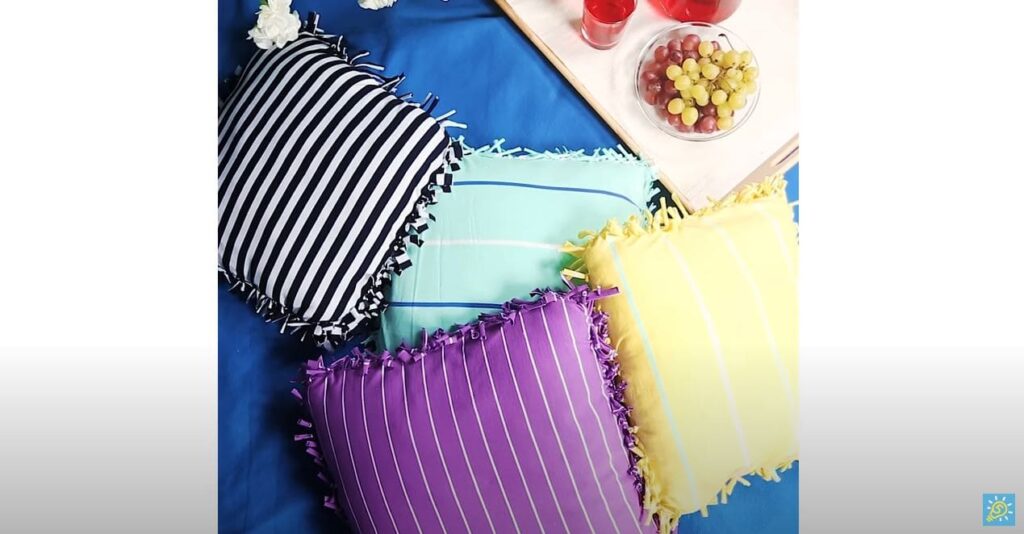
Another great upcycled clothing idea is by turning old garments into pillows or cushions.
Start by cutting two pieces of fabric to the size you want your pillow or cushion to be, then sew them together, leaving one end open.
Stuff the pillow with an old pair of clothes or any other soft material you have on hand, and sew up the remaining opening to secure the stuffing.
This is a great way to use upcycled clothing and transform it into comfortable home decor.
Method 8: Make a Tote Bag
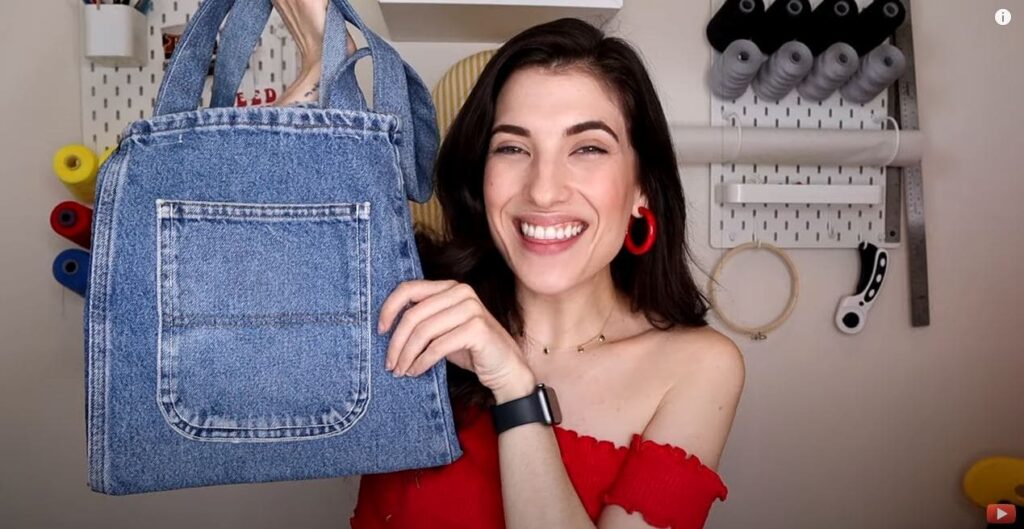
Finally, you can upcycle old garments by turning them into a tote bag.
To do this, simply cut two pieces of fabric to the size you want your bag to be and sew them together, leaving the top open.
You can also add handles or straps to the bag for ease of carrying.
Don’t throw away your old clothes – upcycle them into reusable bags instead!
By repurposing waste materials, you can create a functional and stylish alternative to single-use plastic bags that helps to reduce waste and conserve resources.
Method 9: Create a Unique Picture Frame
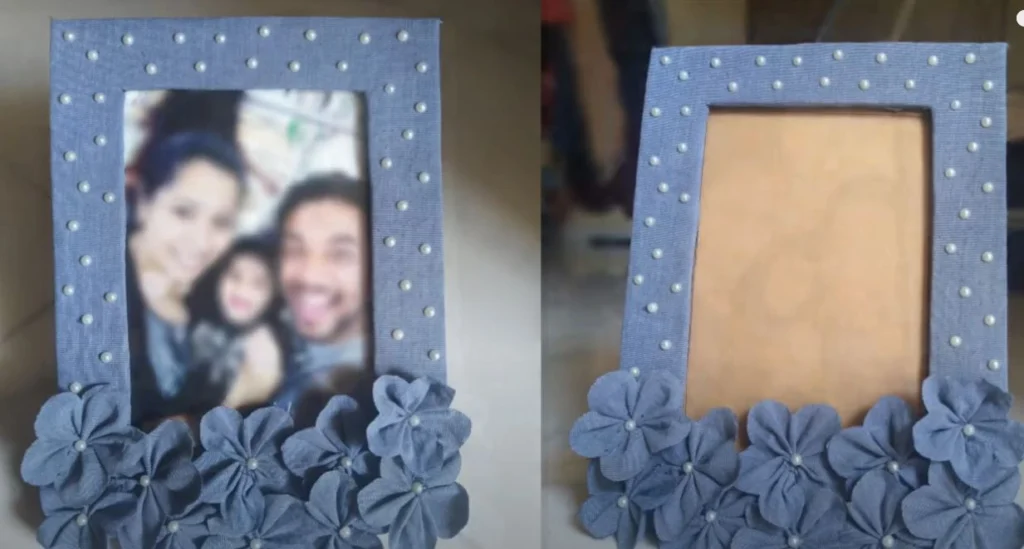
You can also use your old clothes to create decorative pieces for your home. One such idea is to use old fabric to give a new life to a dull picture frame.
For example, if you have an old pair of jeans that you love but can no longer wear, why not use the denim to create a unique picture frame?
To do this, start by cutting out a piece of denim (or any fabric of your choice) large enough to cover your picture frame. Apply a layer of craft glue to the frame and wrap the fabric around it, making sure to smooth out any wrinkles. Let it dry and trim off any excess fabric. You can even add embellishments like buttons or patches from the same pair of jeans for an extra personal touch.
Not only does this provide a unique, rustic look to your picture frames, but it also allows you to preserve and display pieces of a beloved garment. Plus, it’s another great way to reduce waste and make your home decor more sustainable.
How to do it: (Jisna Jose)
The Environmental Impact of Upcycled Clothes
Upcycled clothes have significant environmental benefits, including reducing textile waste and limiting the carbon footprint of textile and garment production alone, pushing us towards a greener future.
By repurposing used clothes surplus materials into new, one of a kind fashionable pieces, upcycling promotes sustainability and minimizes the use of raw materials by the textile industry.
Upcycled fashion can help mitigate the environmental impacts of the fashion industry and other garments, such as reducing the amount of waste generated while limiting the need for new textile production and mass production of textile products.
Additionally, upcycling clothes can result in sustainable and eco-friendly upcycled clothing.
Best Practices for Safe Upcycling
When upcycling clothes, it’s important to take safety precautions to avoid accidents or injuries. Here are some best practices to follow:
Properly use a sewing machine: Be sure to proceed with caution when using this equipment. Read the instruction manual carefully, and practice on scrap fabric before starting your upcycling project.
Handle sharp objects with care: Scissors, rotary cutters, and other sharp objects are often used in upcycling projects. To avoid any injuries, take necessary precautions to keep yourself safe. This includes wearing protective gear like gloves and eye goggles, as well as keeping these materials away from children.
Avoid injury or accidents: When cutting or sewing, always pay attention to what you’re doing to avoid accidental injury. Keep your workspace organized and tidy, and never leave sharp objects lying around. Take short beaks and refresh yourself from staring at one spot.
Use proper lighting: Good lighting is essential when upcycling clothes, especially when working with dark fabrics. Use a bright lamp or work in a well-lit area to ensure you can see what you’re doing.
Choose appropriate materials: When selecting materials for your upcycling project, make sure they are appropriate for the intended use. For example, use heavy-duty thread for items that will be used frequently, and choose fabrics that can handle the stress of wear and tear.
Conclusion
Upcycled clothing is a great way to add new looks to old clothes such as t-shirts, a pair of denim, or wedding dresses and refresh your wardrobe without breaking the bank.
It’s important to differentiate upcycling from recycling, as upcycling refers to actually improving the quality of the item and making them sustainable fashion.
There are many ways to upcycle clothes, including knotting a t-shirt, adding patches, layering with a cardigan, cutting, refashioning, and more.
So the next time you’re tired of your old clothes, try one of these 8 simple ways to upcycle them into trendy and sustainable upcycled clothing.
FAQ
What is upcycling clothes?
Upcycled clothes is the process of taking old or used clothing and repurposing it into something new and useful, rather than throwing it away. Giving clothing a new life and creating new wearable pieces.
How do I start upcycling clothes?
To start upcycling clothes, you can begin by looking at your wardrobe and identifying items that could use a new look.
Can you make money upcycling clothes?
Yes, it is possible to make money upcycling clothes by selling upcycled clothing either online or at a local market.
Is it cheaper to start upcycling clothes?
Upcycled clothes can be cheaper than buying new clothes, as it usually only requires minimal materials and the use of existing clothing.
Is upcycling environmentally friendly?
Yes! Upcycling clothes helps reduce greenhouse gas emissions, carbon emissions, post consumer waste, and fast fashion, by reusing clothing, rather than buying from fashion brands.
Is upcycling the future of fashion?
Yes, upcycling clothes is the future of fashion. With growing awareness and concern for the environment, more people are looking for sustainable fashion to shop and dress.


